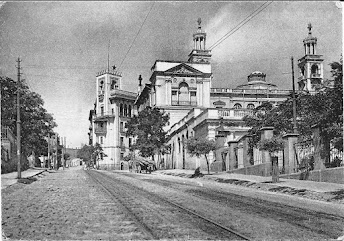Terracotta sarcophagus mask from Egypt, 2nd Century AD
Cool photographs of micrometeorites.
Quintus Valerius Soranus was a Latin poet, grammarian, and tribune of the people in the Late Roman Republic. He was executed in 82 BC while Sulla was dictator, ostensibly for violating a religious prohibition against speaking the arcane name of Rome. And here is a theory that Ovid was exiled for hinting too cleverly about the secret name, which (says the author) connects the Seven Hills of the city to the Seven Stars of the Pleiades. Who knew Rome even had a secret name? Wonderful.
Ancient Israelites ate plenty of non-kosher fish.
12-minute video about new wind power technologies that don't involve giant spinning blades.
David Brooks interviews Joe Biden (New York Times)
More artifacts found in pits at the Chinese archaeological site of Sanxingdui. (Previously on this site here.)
Does a single brain dysfunction, sometimes called the "p factor", underlie many different psychiatric conditions? One piece of evidence is that the siblings of people with schizophrenia are more likely than others to have a wide range of not obviously related mental problems: depression, ADHD, etc.
Anne Boleyn's prayer book, from which she read on the morning of her execution, was preserved within a network of her female relatives – a subversive act which could have gotten them executed – and the names they wrote in it as they passed it around can be read with ultraviolet light.
Body of missing man found in dinosaur statue.
Ross Douthat says Foucault is now more cited on the Right than the Left. After all his whole project was to criticize the web of Power/Knowledge that controls the world, and if most of the knowledge and power are on the left, then it's the right than can make better use of Foucault. Who has been saying "Trust the science'? (New York Times)
Tyler Cowen says economists no longer argue policy via articles and books but on Twitter, and "This is not necessarily progress."
Phil Scott is the wildly popular Republican governor of Vermont, America's most liberal state. The popularity of Scott and other Republican governors of liberal states (Hogan in Maryland, Romney in Massachusetts) suggests to me that what many Americans want is liberal policies with a moderately conservative, straight-talking face.
As a struggling, unpublished novelist John Steinbeck wrote a werewolf mystery novel, the manuscript for which is still held by his estate. Since the title is "Murder at Full Moon", I doubt it is very good, but one is still intrigued.
Is WNYC experiencing an epidemic of bullying or an epidemic of whining? (New York Times) Fascinating that the station has seen multiple cases of people accusing each other of bullying; seems like this happens in the aftermath of shouting matches.
Authoritative-seeming take-down of recent UFO videos; many of the objects may be camera artifacts, or else their extraordinary movements are actually caused by movement of the camera itself. With links to video analysis.
First song from Chris Thile's new album (he was the mandolinist and lead singer of Nickel Creek)
Forest gardening – modifying tracts of forest to contain more plants useful to humans – was practiced by native peoples in coastal British Columbia. What looks like a hemlock forest to you was a carefully maintained landscape containing unnatural concentrations of berry bushes, plants with edible roots, etc.
Phone shaking device that allows you to earn fake steps and miles, for fitness challenges and games like Pokemon Go.
Hilarious review of 1001 Arabian Nights, part of Scott Siskind's book review contest.
The US housing market is insane.
A plague of mice is threatening the agricultural areas of southeastern Australia.
California has a "red flag" law that allows the police to seize weapons from people deemed a threat to the rest of us. The law has been invoked 3,000 times in five years. But it didn't stop the actual San Jose shooter even though he sounds like a good candidate for red flagging.
Some people working from home have created stylish "tiny offices" in closets and similar spaces. (Washington Post)
Mindat is a town of about 50,000 in a forested, mountainous part of Myanmar. Many people there have guns, because hunting is a big part of local culture. When Myanmar's military launched their coup the people of Mindat resisted, using their hunting rifles to drive away the first small forces sent against them. But eventually the military got serious and sent in a heavily armed battalion, driving the resbels into the forest. In the end their resistance only made things worse. Depressing for gun lovers but also for anyone who cares about human freedom.






























































